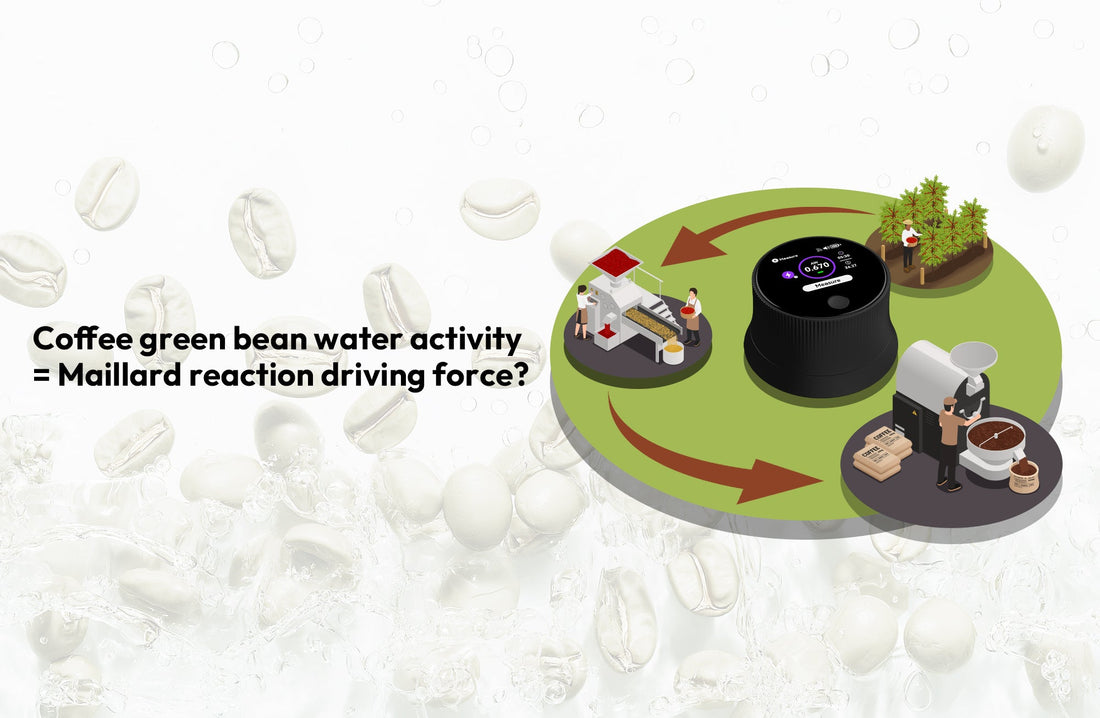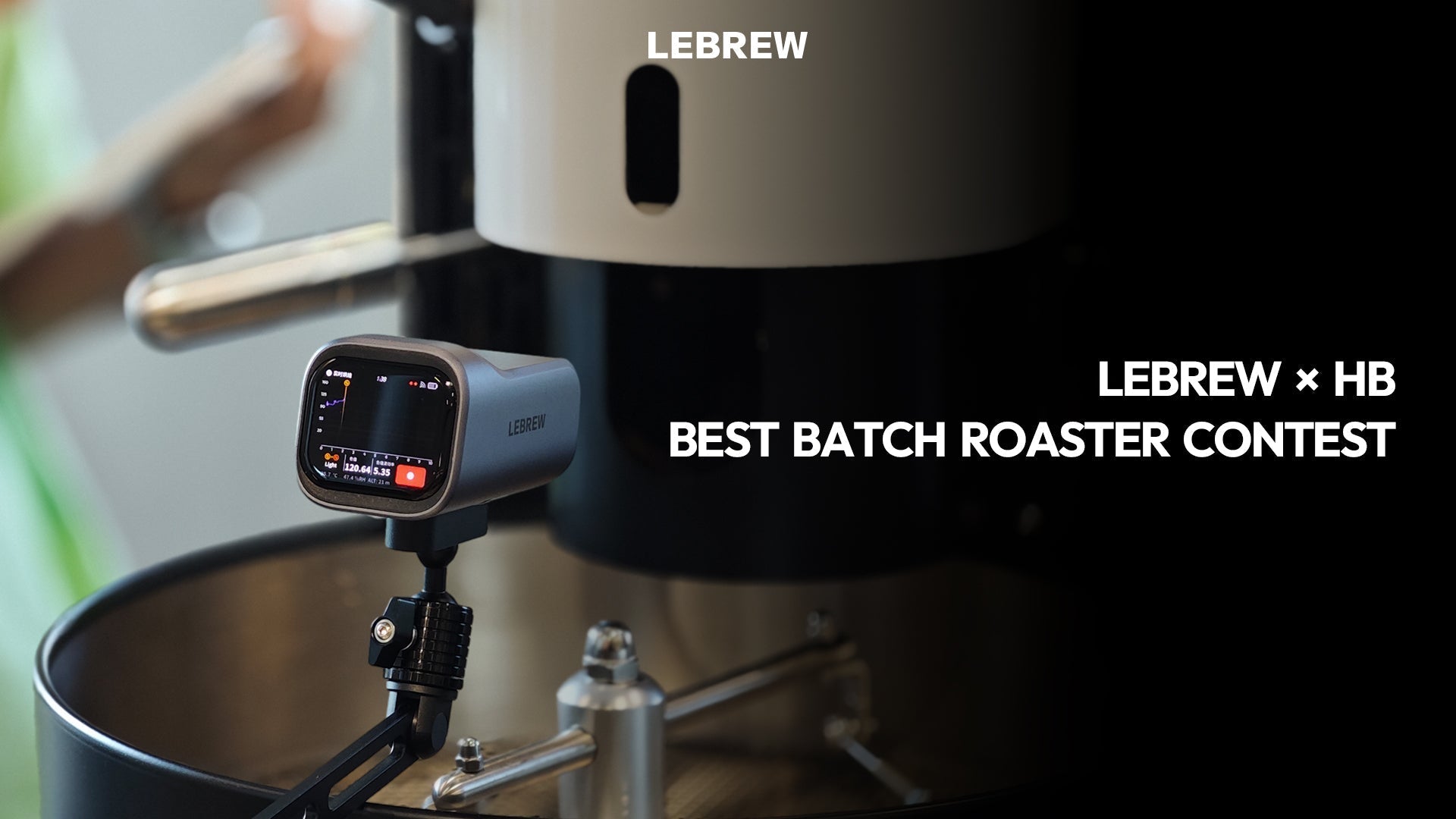coffee green bean water activity = Maillard reaction driving force?

Abstract
Water activity is an important reference for food storage conditions and is ubiquitous in our daily lives, for example, in the testing and quality management of food ingredients and products like jams and creams. However, in the coffee industry, water activity not only plays a crucial role in managing the storage of green coffee beans but also plays a critical role in adjusting the roasting process of coffee beans. This article explains the concept of water activity and its application in coffee roasting in detail.
1. What is "Water Activity"?
Water activity is defined as the ratio of the vapor pressure of water in a food to the vapor pressure of pure water at the same temperature:Aw = p/p₀ .Water activity (often abbreviated as aw), also known as moisture activity, refers to the ratio of the equilibrium vapor pressure of a food in a closed space to the saturation vapor pressure of pure water at the same temperature.

The physical and chemical stability of food is not directly related to its moisture content but rather to the "state" of the water. Even foods with the same moisture content may show significant differences in their susceptibility to spoilage. Furthermore, the strength with which water in food binds to non-water components varies, and bound water cannot be effectively utilized by microorganisms or biochemistry. Therefore, the concept of water activity (aw) was introduced.
2. How Does Water Activity Affect Coffee Roasting?
Many chemical and biochemical reactions require the participation of water molecules to proceed (e.g., hydrolysis reactions). Lowering the water activity reduces the amount of available free water, thus slowing down the rate of these chemical reactions.
During coffee roasting, the free water (with high water activity) on the surface of the coffee beans evaporates due to the heat before the chemical reactions take place. This chemical process marks the beginning of roasting. This phase is referred to as the "drying stage." Measuring the water activity of green coffee beans can help estimate the time and heat required for the actual roasting process. This is especially important when handling mixed components, as individual components often have different drying phases. These phases can be accurately determined by measuring water activity, not just by measuring moisture content.

The intensity of the Maillard reaction depends significantly on the water content of the medium. In coffee roasting, a water activity range of 0.4–0.6 is considered ideal and provides a controllable roasting process. Water activity above 0.6 or below 0.4 can make the roasting process uncontrollable. Excessively high water activity can cause the Maillard reaction to occur excessively, making the roast degree unpredictable, while excessively low water activity can hinder the Maillard reaction. Therefore, in coffee roasting, we can consider water activity as the "driving force" of the Maillard reaction.
For freshly harvested beans, the water activity is quite active, and the flavor is excellent, but this can be difficult to manage. After storage (under constant temperature and humidity) for 3 to 6 months, the water activity of the beans stabilizes, and the beans' flavor is optimal and more predictable. After 6 months to a year of storage, the water activity stabilizes, and the beans are best roasted at this point. After one year of storage, the water activity gradually decreases, and the flavor begins to deteriorate.
3. Applications of Water Activity Testing in the Food Industry
Low water activity can inhibit chemical changes and microbial growth in food, stabilizing the food's quality. This is because chemical reactions, enzymatic processes, and microbial growth are key causes of food spoilage, so reducing water activity can suppress these reactions. The mechanism is as follows:

- Most chemical reactions must occur in an aqueous solution. Lowering the water activity changes the state of water in the food, increasing the proportion of bound water and decreasing the proportion of free water. Bound water cannot serve as a solvent for reaction substances. Therefore, reducing water activity inhibits many enzymatic reactions in food.
- Many chemical reactions are ionic. For these reactions to occur, the reactants must first undergo ionization or hydration, conditions that require a sufficient amount of free water.
- Many chemical and biochemical reactions require water molecules to participate (e.g., hydrolysis reactions). Lowering the water activity reduces the amount of free water available for these reactions, thus slowing their rate.
- Many enzyme-catalyzed reactions require water not only as a reactant but also as a medium for enzyme-substrate activation. When the water activity falls below 0.8, the activity of most enzymes is inhibited. If the water activity falls between 0.25 and 0.30, enzymes like amylase, polyphenol oxidase, and peroxidase in food are strongly inhibited or lose their activity.
- Microbial growth requires a minimum level of water activity. For most bacteria, this is between 0.99 and 0.94; for most molds, it's between 0.94 and 0.80; for most salt-tolerant bacteria, it's around 0.75; and for xerophilic fungi and osmophilic organisms, it's between 0.65 and 0.60. When water activity falls below 0.60, most microorganisms cannot grow.
4.Conclusion
By measuring the water activity in food, we can predict which microorganisms may be responsible for food spoilage and identify them. For example, a cake with a water activity value of 0.8 may have a shelf life of 24 days at 21°C. If the water activity increases to 0.85, the shelf life will decrease to 12 days at the same temperature. This shows that water activity dictates microbial growth rates. Therefore, managing the water activity of food is a crucial indicator for ensuring food safety and quality.
Using the LeBrew RoastSee AquaGauge can help you establish better storage conditions and fine-tune your roasting process for green coffee beans.
If you have any questions or suggestions regarding this article, please feel free to contact us at:
service@lebrewtech.com




